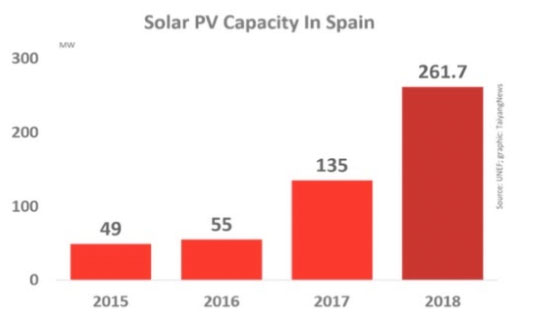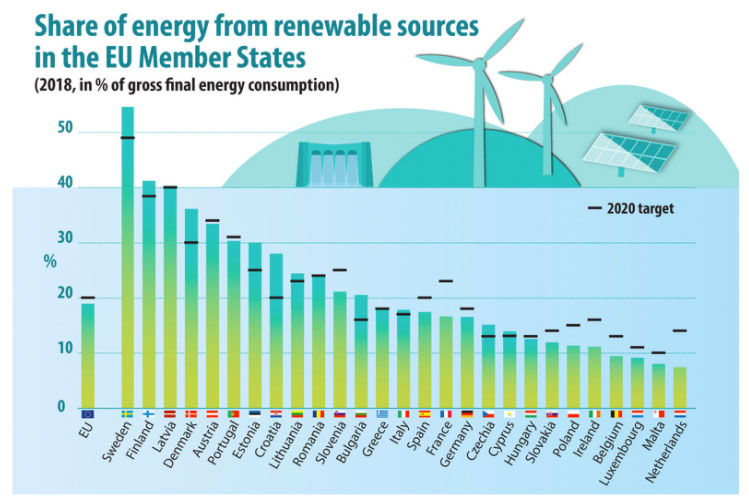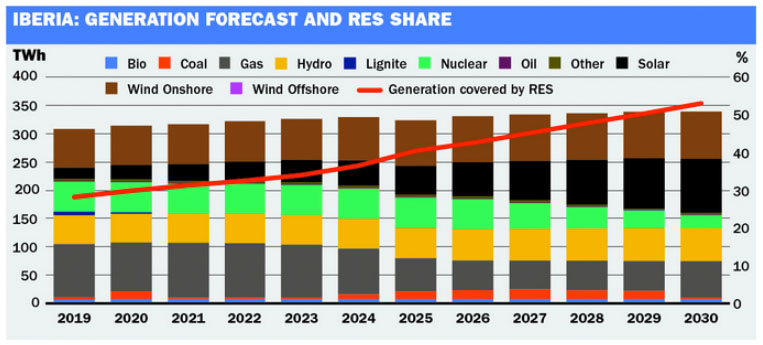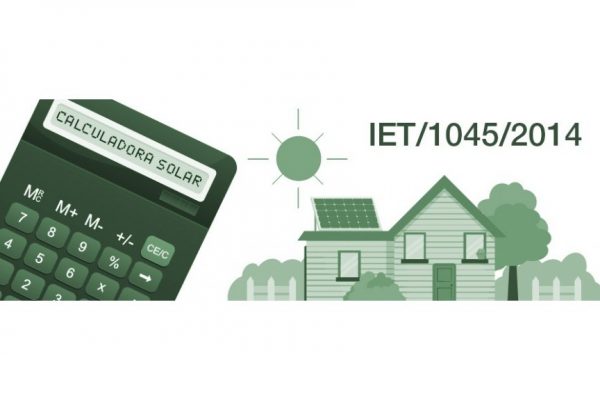With 2,500 hours of sunshine per year and average radiation of 1,650 kWh/m², Spain has one of the highest natural potentials for the generation of solar energy in Europe.
The above-average number of production hours and good infrastructure make the market attractive.
Development
After the Spanish government suspended the feed-in tariffs in 2013 in response to the euro crisis, the sector initially collapsed.
However, as the prices for photovoltaic (PV) modules and battery storage have fallen sharply and Spain’s sun offers high average irradiation, individual plants have already been built in Andalusia without any subsidies, thus demonstrating the economic viability.
2015 saw movement again in Spain’s renewable energy market: The moratorium on subsidies was relaxed at the end of 2015 and at the same time a new modus operandi for planned plants was presented, which was intended to give the sector new impetus without further burdening the tariff deficit of the electricity sector: the tendering of plants in the form of a reverse auction.

The contract was awarded to the company claiming the lowest subsidy or remuneration for the construction of a plant. The plants must be completed within a period of two years.
This should bring the EU target of covering 20% of total final energy consumption with renewable energies by 2020 closer again.
Own consumption
Conditions
The law issued in October 2015, for the first time, reorganised the legal, technical and economic conditions for the authorisation, technical and economic conditions of electricity production for own consumption in Spain.
The decree was politically very controversial, however, as it introduced the so-called “solar tax” and would probably not be suitable for supporting the renewable energy sector.

Check full infography here.
Own consumers with an installed capacity of more than 100 kW were entitled to sell their produced electricity at market prices. However, for systems that were or could be connected to the supply grid, they had to pay fees from 01.04.2016 onwards, which consisted of a one-off fee of approx. 9-15 EUR/kW depending on the capacity of the system and a regular fee of 0.05 to 0.07 EUR per kWh of energy produced.
Small installations
Excluded from this were so-called isolated applications where no electricity grid is available, small installations under 10 kW and installations built on the Canary or Balearic Islands.
Operators of systems below 10 kW and systems installed on the Spanish islands (Canary and Balearic Islands) only had to pay the one-off fee.
Operators of plants with more than 100 kW could sell the electricity produced in excess of their own requirements at the market price.
All parties, with the exception of the governing party and the renewable energy associations, condemned the so-called “sun tax” on electricity produced and consumed by themselves, which contributed to uncertainty in the market for years.
Photovoltaic systems trend
Photovoltaic systems have shown an upward trend again in Spain in the last three years.
In 2016, the first tender for renewable energies according to the new model (biomass and wind energy) took place, in 2017 the first photovoltaic projects with a total capacity of 3,910 MW were awarded, which had been commissioned before 2020.
In 2017, 135 MW of new PV systems were installed, an increase of 145% over 2016. The newly installed capacity is divided between self-consumption systems, grid systems and off-grid systems, with the latter installed primarily in agriculture and for rural power supply.

Although the industry association UNEF gives a positive assessment of the new PV infrastructure projects in the tenders, it is also firmly committed to the continuous expansion of own consumption systems by companies that install PV systems to reduce energy costs and increase competitiveness, especially in the following sectors: agriculture, wineries, food production, trade and the hotel sector.
Costs reduction
261.7 MW of new solar photovoltaic capacity was installed in 2018, an increase of 94% over the previous year. Around 90% of the new installations in 2018 will be for own consumption, for example in industry and agriculture.
In energy-intensive industries, such as meat production, electricity costs can be optimised considerably and a saving of around 30% can be achieved by including systems for own consumption.
Cost reductions of about 80% within a decade in material costs, the impetus of the European energy targets and the abolition of the so-called sun tax giving sector tailwind.
In 2018, the new law was adopted. In this law, the so-called sun tax was abolished. This taxon photovoltaic own consumption was introduced in October 2015. The main focus of it is the introduction of a legal framework to support own consumption throughout the country.
The new rules provide for simplified registration procedures for new plants up to 100 KW for own consumption. In addition, the right to own consumption for community renewable energy projects has been strengthened and all fees for own used energy are to be abolished in the future.

In April 2019 a new regulation came into force to define the technical conditions and the management of electricity for own consumption. Law defined important innovations.
These include the first full recognition of collective own consumption, the simplification of bureaucratic procedures for the legalisation of installations and the abolition of any fees or charges on electricity produced for own use. Furthermore, the legislative package establishes simplified compensation for the feed-in of surpluses, which is reflected in reductions in the electricity bill.
Future
The industry association is expecting 300 to 400 MW of newly installed capacity in the own consumption sector in future. The largest niche with growth potential is agriculture.
According to UNEF, around 25% of the own consumption projects in 2018 were off-grid installations for irrigation systems. Solar panels with batteries are already much cheaper than diesel engines.
Since the autumn of 2018, the issue of private consumption in Spain has received political support again.
With the “Clean Energy for All Europeans” package, the European Commission decided, among other things, that any tax increases or similar disadvantages and restrictions on own consumption based on renewable energies should be abolished by the member states. This fact contributed to the abolition of the so-called “sun tax” in Spain.
According to the current legal situation, the situation of own consumption clearly became less bureaucratically complex. The Spanish government see a great opportunity for the country in terms of climate change, energy-saving and economic development.

Official figures are not available, but it is estimated that around 10,000 photovoltaic systems have now been installed for private self-consumption. Under the new legislation, four types of solar energy systems are possible for Spanish self-consumers.
The individual administrative steps to be followed in order to install their own consumption system with or without surpluses are now clearly defined. The Spanish Institute for Energy Diversification and Savings (IDAE -Instituto para la Diversificación y Ahorro de la Energía) published a preliminary manual on the necessary procedures at the beginning of April 2019.
It is intended to clarify the procedure for the installation and registration of own consumption systems not only for the “prosumer”, but above all also for the installing companies, and to support them in the administrative process.




